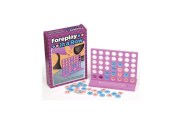Saving money. For some people, it’s as natural as breathing air. For others, it’s as difficult as breathing fire.
I’m somewhere in the middle, towards the ‘air’ end. I spend very little extra money in my day-to-day life, and can cut the splurges like a boss when we’re saving for a specific goal (like a house, holiday or big-ticket item).
But I’m a sucker for an impulse “I’m worth it” clothing purchase. I blame L’Oréal, of course.
It’s time for a refresher course. And it’s time for some new ways of thinking. Because if the tried and tested ways of saving money worked for everyone, we wouldn’t need constant reminding. So, here’s how to really save money this year:
- Ditch your home phone if you tend to use mobile. We still have a home phone. We never make calls on it, and just three people call us on it – my mother-in-law, my grandmother-in-law, and telemarketers. (On second thought, make that 500 people, give or take.) If those first two can’t reach us on the landline, they try our mobiles anyway. It’s time to ditch our landline altogether.
- Shop your mobile plan. Do you need a new phone every time your contract comes up? Do you need that much data, or do you spend much of your time within range of wifi? Do you need lots of calls, or can you swap them out for data if needed? Do you travel overseas? Have any of the smaller telcos expanded into your area? Do you spend most of your time out of range of all but the biggest telcos? (If so, sorry! I’ve been there, too.) Work out how you use your phone, and then shop around for the best deal.
- While you’re at it, shop your every plan. Phone. Electricity. Gas. Mortgage. Anything else you might pay for – gardening, cleaning, babysitting. Can you get a better deal? Can you consolidate costs? Can you do it yourself? Can you share services and costs with neighbours or friends? Your local mowing franchise might only charge a fraction more to mow three neighbouring yards than one.
- Pay off your credit cards every month. Every month. Every. Single. Month. In full. On time, every time.
- Pay off all your credit card and personal loan debt before setting up a savings account. When I was in my early 20s, ING Savings Maximiser Accounts were THE big thing. Everyone had at least one, and many had more than one. One for the next holiday, one for a house deposit, one for a new car – dedicated savings accounts galore. But many people still had credit card debts. Instead of paying off that debt, they were dropping all their funds into savings accounts while the interest on their debt accrued at 3-4 times the interest they were earning on their savings accounts. They thought they were saving, but they were losing money. Don’t make the same mistake.
- Declare your job a second job for tax purposes. Please note: this isn’t financial advice. Give this some serious thought before doing it. (And you may have to wait until July to make the change anyway.) If you do this, you can’t invest your money as soon as you earn it. But if you are really, disastrously not good at saving money, or tend to spend everything you earn, then you could let the Australian Taxation Office (ATO) help you. Mark your job as a second job for tax purposes. The ATO will deduct more money in tax from your salary, so you won’t have the cash in your account to spend. Then, when you file your tax return, you’ll receive the extra tax you’ve paid back, and you can direct it straight towards a savings account. (Or straight towards paying off any debts.)
- Ditch the “but I DESERVE it” purchases. I know. I know that sometimes you’ve worked SO hard for something and you just want to celebrate and just this ONCE won’t matter, will it? But the ‘once’ becomes once more the next time, until every time something goes right in your life, you decide you simply have to celebrate. Sometimes we just need to let the good thing that happened be its own reward.
- Budget. Start simply. Write down everything – EVERYTHING – you spend money on for a month. Don’t forget to record that 50c lollipop at the train station as you wait for the 5.27, and that $2 you toss into a busker’s guitar case on the weekend. When you look back over it, not only will it be a wake-up call as to how much all the little things add up, but it will enable you to better plan your purchases. An app like Fudget can help you keep track.
- Meal plan. Sit down each week, decide what you’ll eat each day, and shop accordingly. You can choose meals that you know are always cheap to make, or you can plan with the supermarket catalogue in front of you and work the specials into your menu. Bonus: you’ll save time deciding what to eat every day. Double bonus: if you’re anything like me, you’ll have leftovers that you can then take to work for lunch.
MORE ON THIS: How to Meal Plan Like a Ninja
- Take your lunch to work. Sigh. Boring, right? And you’ve heard it a million times before. And you already DO it. But think about all the food you consume at work. Can’t get through the day without a midday can of soft drink? Buy a carton of your preferred cans from the supermarket and take one in to work every day. Find yourself at the vending machine every afternoon for a sugar hit? Buy a packet of lollies and take a handful in each day.
TRY THIS: 10 Hot Lunch Ideas
- Go through your wardrobe. I am so guilty of the “But I need a new white shirt!” purchases of items I don’t actually need. Or frustrated cries of “I have nothing to wear!” But I recently went through my wardrobe. I wrote down every single item of clothing I had. It was a long list. A loooong list. I then wrote down every combination I could make out of those items. At least, I started to, but after a while the message sunk in. I can go for months without repeating an outfit from head to toe and, now that I have written proof of this, the purchases are much more difficult to justify to myself.
- Host a wardrobe swap. If you’ve gone through your wardrobe and realised that, actually, you don’t like your clothes, or things no longer fit the way they used to, get together with some friends who feel the same and swap your clothes around. Alternatively, sell any items that are still in good repair on eBay, and head to an op shop or discount shopping outlet with the earnings (and no more).
- Christmas shop all year round. Christmas may be in December, but the sales go year-round. Rumour has it that Santa will be stuffing my kids’ Christmas stockings with some super bargain summer gear picked up in last year’s Boxing Day sales, and some books and toys picked up in the mid-year clearances. If you’re worried about your children’s interests shifting (is anyone else’s daughter finally outgrowing Peppa Pig?), stick with basic stocking fillers throughout the year – clothing, books, stationery, socks and jocks – and shop around for good deals on toys in December.
- Present shop all year round. Since you’re now Christmas shopping all year round, expand to birthdays and special occasions. You don’t have to wait for a birthday invitation to buy a present for someone. I have a present drawer at home, filled with gifts for kids of all ages snapped up on sale. When my kids are invited to a party, I choose an appropriate present, wrap it, and send them on their way. I also use the children’s artwork for wrapping paper and cards.
- Shop smarter at the supermarket. My pantry and fridge are full of home brand products. Corn flakes, rice bubbles, water crackers, rice, pasta, tinned tomatoes, tacos, laundry detergent – all home brand. Sure, there are some branded items – Cadbury Dairy Milk chocolate, I’m looking at you – but for most staples, I prefer to save my money. To spend on more Cadbury Dairy Milk chocolate, obviously. (This is not sponsored. I just really like Cadbury Dairy Milk. Sorry. I promise I will not mention Cadbury Dairy Milk chocolate again.)
- Never. Shop. Hungry. *CRUNCH* Oh, hi. What’s that, you say? *CHOMP* I find that if I go to the supermarket hungry, I’m more likely *MUNCH* to buy a whole lot of stuff – usually of the
Cadbury Daijunk food variety – that I really *SLURP* don’t need. I might even *GULP* open a packet right there in the supermarket. So *SIGH* embarrassing.
- Buy second-hand school uniforms. When my daughter started school, she had new everything. Everything. Dresses, t-shirts, shorts, the school sweater – all sparkly new. By mid-year, they looked years old. Faded, stretched, worn. I’ve bought all subsequent items from the second-hand uniform shop, and they’ve lasted just as long. If your school doesn’t offer a second hand option, befriend a parent of an older child and ask if you can purchase the outgrown clothing at a discounted rate. Chances are, they’ll happily hand them down to you for absolutely nothing.
- Long live hand-me-downs.While we’re on the topic, make use of hand-me-downs in general where you can. We are lucky enough to receive clothing for both of our children from older cousins and friends, and when our children outgrow their items, we pass them along to younger cousins and friends. Everyone wins.
- Look into your investment options. If you’re well set up, and actually looking to make more money off what you’ve already saved, do your research. What will pay off for you in the long run? Making bigger payments on your mortgage? Investing in a managed fund? Purchasing an investment property? Using capital to start your own business?
- See a financial planner. If you don’t know where to start, or you’ve started and are feeling overwhelmed, book in to see a financial planner. They can also help if you’ve already decided what you want to do, by helping you put it into action or by advising on the finer details (such as the risks involved in managed funds, or how best to set up the purchase of an investment property).
- Won’t someone think of the children? This is my golden word on handling money responsibly. I look at my children who rarely see money, who could grow up thinking that it comes out of a wall whenever you need it – or that it doesn’t actually exist, and all they need is one of those plastic things in mum’s wallet – and I wonder how I can teach them financial responsibility. The best way? Be financially responsible myself. After all, a healthy dose of mum guilt never hurt anyone.
More ways to save this year:
- How to Recover From a Holiday Budget Hangover
- The 52-Week Savings Challenge – You Can Do It!
- 5 Tips To Truly Help You Save Money
Image: Getty








